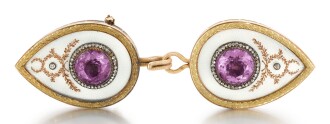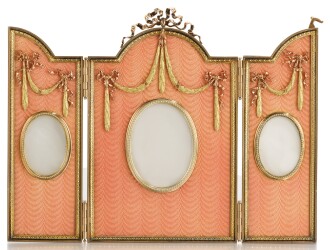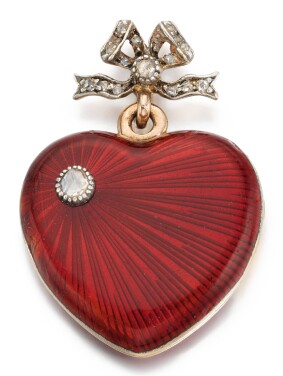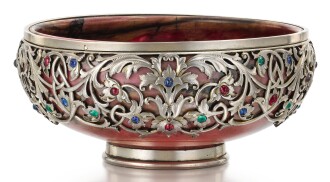I n the history of Fabergé’s talented designers, there is one artist whose originality set her apart as truly exceptional: Alma Pihl (1888-1976). Unlike the famous Fabergé workmasters who had preceded her, such as Micheal Perchin and Henrik Wigström, Alma Pihl was not only a young woman in her twenties, but largely self-taught. The success of Alma Pihl, just like her imaginative designs broke the mould of Fabergé’s usual re-imagination of Neoclassical and Rococo styles. Her imaginative works, like this pendant, were entirely original; inspired by the world around her, she created unique pieces that are some of the most modern and enduring designs ever made by Fabergé.
Alma Pihl was born into a family with deep connections to Fabergé, her mother Fanny Holmström was the daughter of Fabergé’s workmaster, August Holmström, and her father Oscar Pihl was head of Fabergé’s jewellery workshop in Moscow. In 1908, at the age of twenty, Alma first started work with her uncle Albert Holmström, who succeeded his father as Fabergé’s head jeweller in St Petersburg. As a trainee of the firm, Alma worked with the life-sized sketches that Fabergé produced of each piece for archival purposes. These full-sized designs also detailed the gem stones and precious metals to be employed in each design, as well as the labour cost to produce each piece. In her spare time, Pihl began to sketch designs of her own. Her ability to create beautiful and innovative designs was quickly noticed by her uncle and soon her work became part of Fabergé’s official stock book.
In 1911, two years into Alma Pihl’s career, she was presented with an important and challenging commission for one of Fabergé’s most important clients, Dr Emanuel Nobel, a successful businessman and director of the Branobel oil empire. Nobel came to Fabergé requesting forty small pieces of jewellery, which he planned to tuck into white linen napkins at the place settings for the wives of his associates during his company parties. Each jewel was to be completely unique, created from high quality materials but, so as not to seem like bribes, the value was to be in their design rather than the excessive opulence of material use. Alma Pihl was placed in charge of this expedited and important order.
Alma Pihl’s work on Dr Nobel’s commission began immediately following his visit in January. Searching for inspiration, she famously gazed out of her frost covered workshop window and noticed sunlight glistening across the ice fractals forming on her window pane. The shimmering, intricate delicacy of these ice flowers gave her the idea to transform rock crystal, tiny diamonds, gold and platinized silver into six different brooch designs, which she labelled as ‘frost flowers’.
Dr Nobel was so please with Alma Pihl’s frost-inspired brooches that he purchased exclusive rights to her design concept. In addition to distributing the original thirty-seven ‘frost flower’ souvenirs at company parties, Nobel also commissioned more significant frost-jewels, inspired by them, for more personal purposes; these impressive designs, like the present pendant, were often given out at large family gatherings notably during Nobel family weddings.
The ingenious design of this pendant is a sophisticated variation of Alma Pihl’s original idea to preserve transient ice flowers in rose-cut diamonds and rock crystal. In the faceted carving of its body and the climbing, diamond-set trellis work that encloses it, the completely unique ingenuity and joy of Alma Pihl come to life. The construction of this important pendant offers rare insight into the culmination of Alma Pihl’s famous frost designs in Fabergé’s Imperial Winter Easter egg of 1913, one of the most precious and important Imperial Easter eggs ever produced by the firm. Moreover, this pendant marries the famous quality of Fabergé with the deeply creative and romantic spirit of Alma Pihl. The creation of a woman both wearing and designing her jewels, Alma Pihl’s designs, like this rare pendant, are without parallel in pre-Revolutionary Russia.















